Antonio Gallo graduated from the Università Cattolica del Sacro Cuore (UCSC) of Piacenza with a Bachelor of Science in Agricultural Sciences and Technology, where he also received a Ph.D. degree in Animal and Nutrition Sciences.
He defended the thesis titled “Aflatoxin absorption and excretion dynamics in dairy cows: technical strategies to reduce metabolites carry over in milk”. During his Ph.D., he spent a period at Utah State University with his advisor, Prof. Duarte E. Diaz.
From February 2008 to February 2010, he obtained a research fellowship in Animal Nutrition at ISAN of UCSC, and from March 2009 to February 2013 he was a full-time Researcher at ISAN of UCSC. From February 2013 to 2016, he was a Post-doc at ISAN of UCSC, and from April 2016, he was a Researcher in Animal Nutrition at Università Cattolica del Sacro Cuore (UCSC) of Piacenza, Italy.
Since February 2021, he is Associate Professor in Animal Nutrition. His main research topics regard nutrition science, feed & food evaluation, feed & food safety, and modeling digestive and metabolic processes in animals. As a part of his research activity, he has carried out teaching activities for bachelor’s and Ph.D. students and participated in National and International meetings and symposiums.
Since 2019 up to now, he has been included in the World’s Top 2% Scientists list of Stanford University (field: Agriculture, Fisheries & Forestry, sub-field: Dairy & Animal Science).
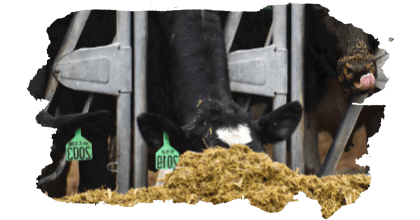

Prof. Gallo, ruminant nutrition is known for its complexity. What attracted you to this field of research?
Animal nutrition is a fascinating field of research, since the mechanisms regulating the digestion and passage of nutrients into the gastrointestinal tract of animals, especially in ruminants such as dairy cows, are complex and not still fully elucidated. Therefore, there is still much space for studying and understanding these mechanisms.
During my university course, I started to study how different research groups around the World had approached ruminant nutrition and I was very impressed.
So, I decided to dedicate part of my research activity to the comprehension of these mechanisms, by focusing on:
- ⇰ The characteristics of feeds we usually used in animal diets.
- ⇰ The mathematical description of the main processes that regulate nutrient availability in animals.
As part of this feed evaluation research topic, I largely studied the safety aspects characterizing feeds, such as their contamination with mycotoxins.
Indeed, my research activity started with the topic of my Ph.D. thesis, regarding the mechanism of absorption and excretion of aflatoxins into the gastrointestinal tract of lactating dairy cows.
This was in 2003 when there was a serious problem of contamination by aflatoxins in feedstuffs in Italy.

What are the main lines of research you are currently working on?
In the last years, I have been very involved in a self-funded project in which I really believe in. I called it “Safety of Silage”.
 It is an ambitious project that has the main aim to connect the nutritional, safety, and hygienic quality of silage and other forages to the feeding economic performances of dairy farms.
It is an ambitious project that has the main aim to connect the nutritional, safety, and hygienic quality of silage and other forages to the feeding economic performances of dairy farms.
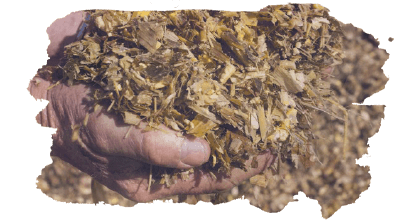
 In particular, all the animal nutritional models developed in different countries around the world have included an in-depth characterization of feeds used in dairy cow diets with the specific aim to provide correct information regarding the capacity of individual feeds entering into ruminant diets to meet the nutritional requirements of the livestock.
In particular, all the animal nutritional models developed in different countries around the world have included an in-depth characterization of feeds used in dairy cow diets with the specific aim to provide correct information regarding the capacity of individual feeds entering into ruminant diets to meet the nutritional requirements of the livestock.The main feed evaluation tables adopted by these nutritional models are based exclusively on chemical or biological parameters (digestibility/degradability of organic matter or different nutrients, such as starch, protein, and neutral detergent fiber).
However, microbial fermentations occurring during the ensiling process produce different end-products that can change many nutritional aspects of the forage.
In my opinion, the best way to evaluate the quality of silage should include chemical-biological parameters as well as:
 Fermentative traits, such as volatilome
Fermentative traits, such as volatilome
 Microbiological counts
Microbiological counts
 Mycotoxin determinations
Mycotoxin determinations
This extensive evaluation of Silage characteristics is necessary because its fermentation is very complex and involves many types of microorganisms as well as relationships among them.


Mycotoxins are an increasing risk to animal and human health. However, ruminants have traditionally been considered to be more “resistant” to the effects of mycotoxin exposure. Is this so?
In 2008, Fink-Gremmels discussed that ruminants are less susceptible than monogastric animals if they are fed mycotoxin-contaminated feed.
This is due to the fact that the rumen constitutes an active defense against mycotoxins through:
Binding mechanisms in which mycotoxins are retained by fiber, yeast walls, or bacterial walls.
Mechanisms of deactivation/degradation by protozoa or ruminal bacteria.
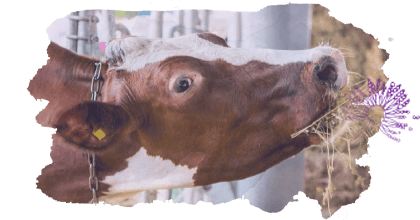
 However, mycotoxins have a direct impact on the health and balance of the rumen as they can damage the ruminal microbiota, causing an increase in the fraction of other mycotoxins that escape microbial degradation. Additionally, mycotoxins are responsible for adverse effects in terms of animal performance and health.
However, mycotoxins have a direct impact on the health and balance of the rumen as they can damage the ruminal microbiota, causing an increase in the fraction of other mycotoxins that escape microbial degradation. Additionally, mycotoxins are responsible for adverse effects in terms of animal performance and health.For example, we have verified the negative effects of mycotoxins produced by Fusarium (Gallo et al. 2021) and Penicillium (Gallo et al., 2015) spp. on the ruminal microbiota and the stability of these mycotoxins in ruminal environmental conditions.
We, and many other authors, demonstrated mycotoxins can interfere with the ruminal microbiota, reducing the efficient use of nutrients in the rumen and afterward in the intestine.

One of the main concerns about mycotoxin exposure in ruminants is carry-over to dairy products. How high is this risk currently and how is the presence of mycotoxins and their metabolites monitored in dairy products destined for human consumption?
The risk of carry-over of mycotoxins and their metabolites in dairy products is directly related to the contamination of the feed administered to the animals, and it involves mainly aflatoxins.
Focus should be drawn to the use of feed contaminated with AFB1, even if the levels are under the limits established by the EU because this doesn’t guarantee the production of milk with levels of AFM1 (a hydroxilized metabolite of the mother molecule, AFB1, capable of contaminating milk and cheese and that is carcinogenic for humans) below the EU limits for this compound.

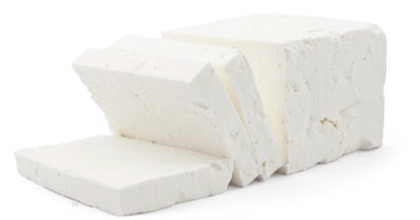
To safeguard consumers, the dairy supply chain should be organized to produce, transport, and manage safe feedstuffs.
This includes implementing strategies focused on low AFB1 contamination and measures destined to counteract contamination of feed and food along this supply chain, for example:
- ⇰ Proper agro-technical techniques for cultivating crops.
⇰ Using non-toxigenic fungi for competition with mycotoxin-producing fungi.
⇰ Using mycotoxin adsorbents or deactivating products, as well as vaccination.

Which are the main mycotoxins that affect ruminants and in which raw materials are they commonly found?
The main mycotoxins that affect ruminants’ health status are regulated mycotoxins, mainly:
- ⇰ Aflatoxins (AF)
- ⇰ Deoxynivalenol (DON)
- ⇰ Toxinas T-2 and HT-2
- ⇰ Zearalenone (ZEN)
- ⇰ Fumonisins (FB)
Along these, there are also a lot of “emerging mycotoxins” that are currently under investigation as there is little data regarding their toxic effects on animals and humans, and their presence is not routinely analyzed in feedstuffs.
 Cattle feed is based on a wide diversity of raw materials, varying extremely between farms. It is generally composed of silage, hay, haylage, and concentrates, as well as several by-products.
Cattle feed is based on a wide diversity of raw materials, varying extremely between farms. It is generally composed of silage, hay, haylage, and concentrates, as well as several by-products.
The variability of raw materials used in animal feed is also reflected in the variability in the possibility of their contamination with various mycotoxins, making the scenario to be addressed extremely diverse and complex.
Johanna Fink-Gremmels reported in 2008 that:
Concentrates may be contaminated with aflatoxins, fumonisins, zearalenone, trichothecenes (DON), and ergot alkaloids.
Green fodder may be contaminated with lolitrem, paspalitrem, penitrem A, trichothecenes, ergovaline and ergot alkaloids.
Silages may be contaminated with patulin, mycophenolic acid, roquefortin, fumitremorgen, verruculogen, monacolin, and others.
However, other studies have also reported other mycotoxins within silages, including regulated ones (DON, ZEN, FB, and AF).


What are the most common mistakes that can increase the risk of mycotoxin occurrence in the raw materials or finished feed?
The prevention of mycotoxin contamination begins during the crops’ growing cycle when the best possible techniques should be adopted (also in relation to weather conditions):
 Avoiding water and fertilizer imbalances.
Avoiding water and fertilizer imbalances. Limiting insect infestations.
Limiting insect infestations. Limiting mechanical damage to crops during the reproductive stages and at harvest.
Limiting mechanical damage to crops during the reproductive stages and at harvest.
 Once the product has been harvested, the best possible storage techniques must be used.
Once the product has been harvested, the best possible storage techniques must be used.
In the case of silages, it is a good practice to:
 Seal the trench carefully and quickly.
Seal the trench carefully and quickly. Apply good compression, both during silage and during storage.
Apply good compression, both during silage and during storage. Avoid the ingress of water in the ensiled mass.
Avoid the ingress of water in the ensiled mass.
In the case of dried hay and cereals, it is advisable to:
 Remove as much water as possible.
Remove as much water as possible. Store them in moisture-free places.
Store them in moisture-free places.


Many studies have demonstrated that Climate Change is influencing mycotoxin occurrence and that, in the future, there may be a shift in the mycotoxin profile of specific regions. In the case of ruminants, which regulated and emerging mycotoxins should we look out for in the upcoming years?
EFSA reports that Climate Change is one of the causes of recent changes in the presence of mycotoxins in Europe.
 The correlation between Climate Change and the increase in mycotoxins is highlighted.
The correlation between Climate Change and the increase in mycotoxins is highlighted.
Cargill’s World Mycotoxin 2021 Report conducted on over 300,000 food samples from >150 plant species from 54 countries showed that more than 70% of samples were contaminated with at least one mycotoxin.
Four mycotoxins were prevalent: DON in 80% of the contaminated samples, followed by FB in 78%, ZEN in 72%, and AF in 64% of the samples.
Maize and cereals, in general, were the most susceptible to contamination, with over 70% positive samples, whereas contaminated oilseed samples accounted for 64%.
According to the report, there has been a 7% average increase in mycotoxin contamination since 2018.
Specifically, AF shows an increase of 11%, while DON shows an increase of 6%.
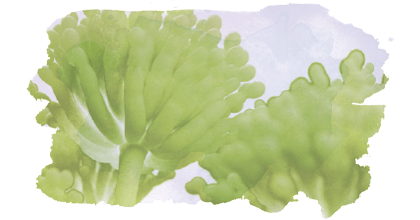
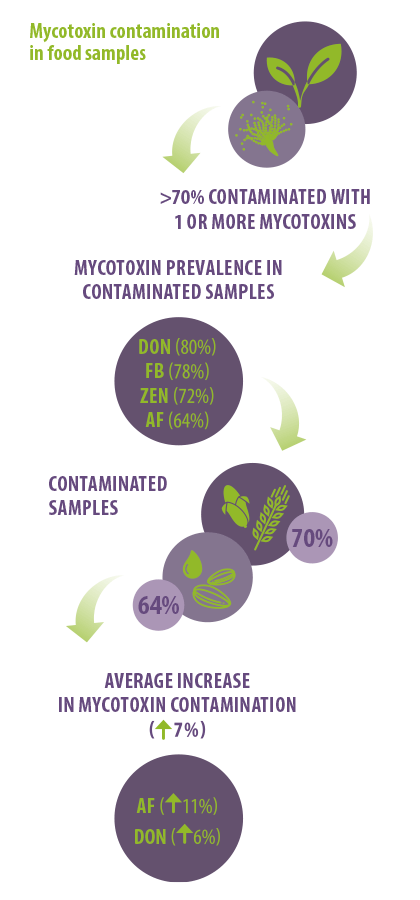

One of the reasons ruminants are more resistant to the negative impact of mycotoxin exposure is their particular microbiome that helps them “detoxify” these deleterious toxins. Can we harness or enhance these microbial populations as a strategy to prevent mycotoxicosis?
The best strategy to promote the correct detoxification of ruminal microorganisms is to keep the rumen in the best possible conditions, preserving its natural components and not putting it under stress (e.g., subacute ruminal acidosis).
This is achieved by feeding a diet with an adequate hay-to-concentrate ratio and providing healthy feed.
In fact, despite the rumen’s detoxification capacity, ruminants are also affected by mycotoxins and some of them, considering their type and dosage, can be responsible for altering and suppressing ruminal mycotoxin detoxification, as reported above.
 Our research group carried out a trial to verify the effects of silage inoculation using ruminal LAB (lactic acid bacteria isolated from sheep rumen), but this strain did not lead to any results in terms of reducing the development of mycotoxins when used as silage bacterial inoculum.
Our research group carried out a trial to verify the effects of silage inoculation using ruminal LAB (lactic acid bacteria isolated from sheep rumen), but this strain did not lead to any results in terms of reducing the development of mycotoxins when used as silage bacterial inoculum.

One of your lines of research has been the influence of fermentation quality and bacterial communities on the co-occurrence of mycotoxins in corn silage. What conclusions have you been able to draw from this research and how could it be applied in practical conditions?
This research has identified that certain fermentative traits and different bacterial communities may be linked to the quality differences observed in silages.
In particular, the production of organic acids and volatile organic compounds with antifungal properties could improve the aerobic stability of silages.
⇰ This is positive aspect, although some microbial groups can use organic acids as substrates for their metabolism, encouraging aerobic deterioration of silage and the proliferation of moulds.
 It was concluded that the use of certain microbial groups as biomarkers to characterize silage quality and mycotoxin contamination, such as strictly anaerobic bacteria, is viable, however, further investigation is needed.
It was concluded that the use of certain microbial groups as biomarkers to characterize silage quality and mycotoxin contamination, such as strictly anaerobic bacteria, is viable, however, further investigation is needed.
In another line of research, you have been studying the effects of lactic acid bacteria inoculants on fermentation and mycotoxin occurrence in high-moisture corn silage. What have been the results of these studies and how can they be applied in field conditions?
These studies concluded that none of the used LAB inoculants (three commercial products and six pure LAB strains) lowered the levels of AF in HMC (High Moisture Corn) silage.
 However, zearalenone and tenuazonic acid were not detected on 30 or 120 days, even when present in freshly picked kernels.
However, zearalenone and tenuazonic acid were not detected on 30 or 120 days, even when present in freshly picked kernels.
LAB groups have caused different fermentation characteristics in HMC silage.
 In particular, commercial inoculants and L. rhamnosus LR7 increased the levels of acetic acid and 1,2 propanediol and improved the aerobic stability of HMC silage.
In particular, commercial inoculants and L. rhamnosus LR7 increased the levels of acetic acid and 1,2 propanediol and improved the aerobic stability of HMC silage.
A similar trial carried out on corn silage and using the same bacterial inoculants showed that some LAB strains (L. rhamnosus LR7 and L. plantarum ATCC 8014) were able to reduce the presence aflatoxins during ensiling stages. However, further research is required to fully understand how these mechanisms take place.

As an expert in animal nutrition and with your experience studying mycotoxins. What are your recommendations to farmers and feed manufacturers to further protect our livestock and ourselves from the effects of these toxins?
In general, the advice I would give is to prevent the formation of mycotoxins.
⇰ This prevention takes place during vegetative growth but also during storage, when fungi can develop and produce mycotoxins.
In addition, it is extremely important not to provide animal feeds that have already been visually altered. If analysis confirms the presence of mycotoxins, it is a good rule not to use the product or to administer it in minimal quantities.
 Depending on the mycotoxins that can potentially be contaminating the feed, several mycotoxin adsorbents and deactivating products may also be used to counteract the negative effects associated with their ingestion.
Depending on the mycotoxins that can potentially be contaminating the feed, several mycotoxin adsorbents and deactivating products may also be used to counteract the negative effects associated with their ingestion.
 In general, all these precautions protect animals and humans, as they indirectly limit the carry-over of these substances into food for human consumption.
In general, all these precautions protect animals and humans, as they indirectly limit the carry-over of these substances into food for human consumption.

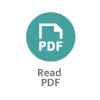


 Micotoxicosis prevention
Micotoxicosis prevention